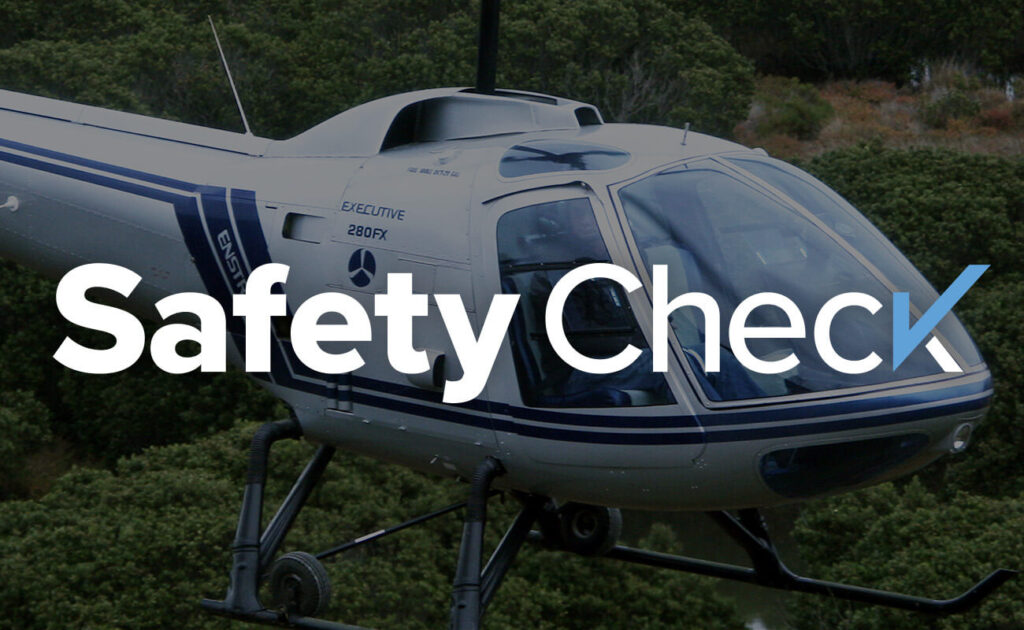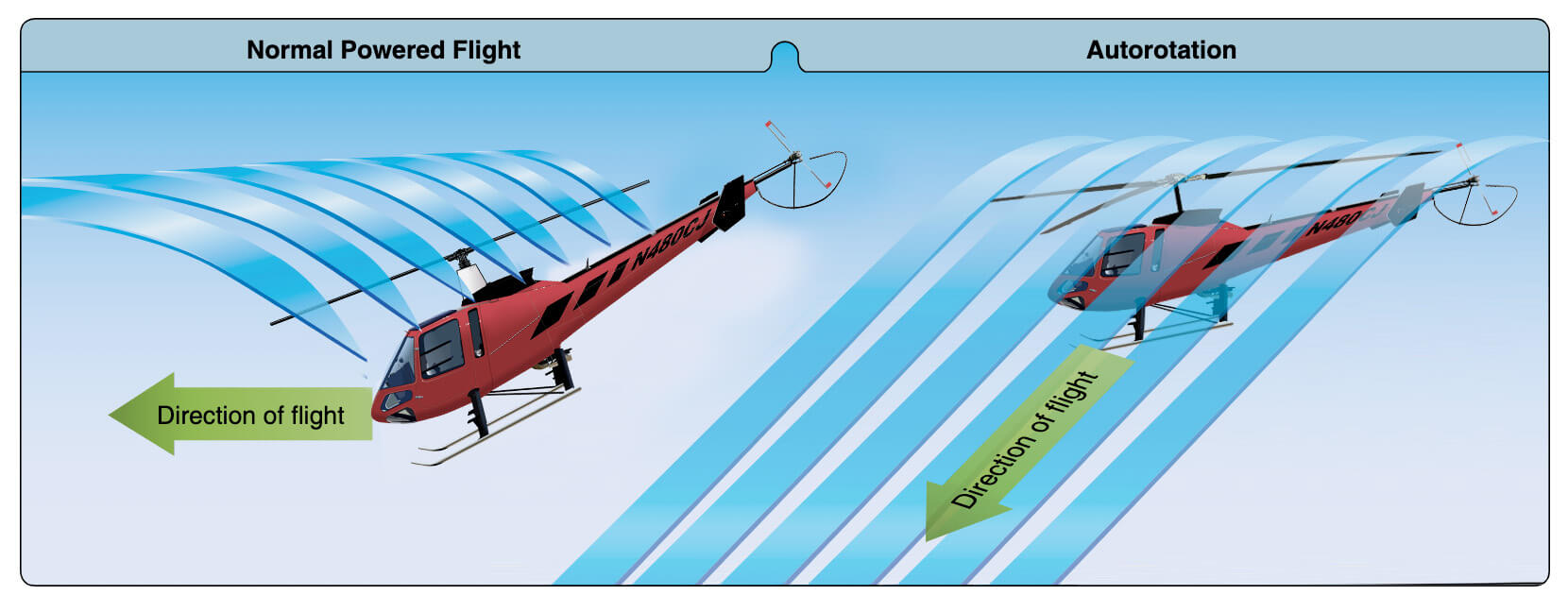Safety Check: The lines you don’t cross

Here’s a question for you: what does the red and white crosshatched line (solid blue on older models) mean on your Enstrom’s airspeed indicator? I swear it’s not a trick question, but it often seems to trip up aspiring pilots during a check ride’s oral questioning.
“Oh, that’s an easy one,” one student said. “It’s maneuvering speed. It’s 58 MPH, and that is the speed you penetrate turbulent air.”
Another student answered confidently, “It’s the retreating blade stall on the tail rotor. The solid red line is for the main rotor.”
Both answers are WRONG!
The correct answer is this: the crosshatched line marks the maximum (Vne) power-off speed for safe descent while in autorotation.
Did you get it right? If not, this Safety Check article is for you.
Most people understand the importance of the solid red line, or the Vne power-on. Exceeding this speed can result in retreating blade stall, whereas the advancing blade flaps up and the retreating blade flaps down. As the forward airspeed exceeds the Vne power on (112 MPH in the F-28F and 117 MPH in the 280FX) at some point the retreating blade will exceed the critical angle of attack and cause the helicopter to pitch up and roll in the direction of the retreating blade. In the case of the Enstrom it will roll to the left. The pilot’s correct action is simple: Gently lower the collective and reduce speed.
Not all helicopters have a Vne power off limitation. All of the Enstrom models do have this limitation. During the aircraft’s certification processes the manufacturer would have to demonstrate the speed at which the helicopter would successfully conduct an autorotation. AT some point in the early 1960’s, the test pilots in Menominee, MI determined 85 MPH would be the indicated forward speed during an engine out scenario.
Why is that? Enstrom’s Senior Flight Instructor Bayard Dupont visualizes it this way. The faster your forward indicated airspeed (IAS), the steeper your helicopter’s nose angle will be. Steeper angles generate less perpendicular airflow against each blade’s autorotative driving region, which likely will a decay in rotor RPM, less lift and a more rapid descent. All bad news.

Here’s where that barbershop pole-looking line comes into play. It’s a reminder from the manufacturer, saying, “Hey! If you’re in autorotation, don’t exceed this Vne, or you’re going to have a bad time!” On an Enstrom piston model, it’s set at 85 MPH, and on a turbine model, it’s set at 85 knots. Nice and easy to remember, right?
I will caution you, though; the marked maximum Vne on an Enstrom is just that, a maximum. Your ideal forward IAS is the same speed that provides the best rate of climb in any scenario, Vy or 58 MPH. Let’s do some math to show you why.
Assuming average weights and standard pressure, our vertical descent rate at 60 MPH IAS will be around 1800 fpm. However, if we lower the nose and increase the forward IAS to 100MPH (above the crosshatched line), we’ll notice our vertical descent rate almost double to 3300 fpm. At that rate, you’ll likely notice your rotor RPM struggling to even touch the lower portion of the green arc (Vs1), resulting in an unusually high and perhaps an uncontrollable vertical descent rate.
If you ever find yourself in this scenario, don’t panic. Instead, use aft cyclic and reduce your forward IAS to Vy. Your rotor RPM will increase, and your vertical descent rate will decrease.
Do you see why I insist on asking students about that red and white line, even if 90% might get the question wrong? In an engine out situation, maintaining the proper forward speed will increase your chances of a successful autorotation.
To any flight instructors reading this, make sure your students are aware of the difference between the Vne power-on and power off. As a refresher, I’ve included Figure 11-1 from the FAA Flying Handbook, 8083-21B.
Fly safe!

Randy is a dual rated Airline Transport Pilot with 13,000 flight hours in airplanes and helicopters. He has type ratings in the BE400 and CE500. Randy has been a rotorcraft Designated Pilot Examiner representing the Grand Rapids FSDO since 2014. Currently he works for Sweet Helicopters, a northern Indiana Part 135 air carrier operator and serves as the Airport Manager of the Goshen Municipal Airport.
About Enstrom Helicopter
From Rudy Enstrom’s early designs in 1943 to initial testing in a Michigan Quarry in 1957 to aircraft operating on six continents, Enstrom Helicopter Corporation has maintained a reputation for safety, value and performance. Based in Menominee, Michigan and proudly made in the United States, Enstrom has a rich history for design innovation. The goal is to provide helicopters to the customer’s exact specification and deliver support and maintenance worldwide.